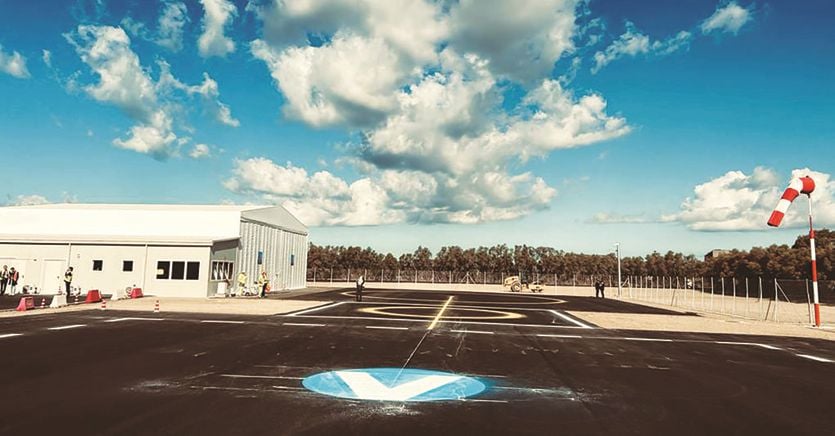Atlantia, one of the world‘s leading holding companies specializing in strategic investments in the airport and motorway sector, is leading Italy, and in particular the city of Rome, towards a new transport frontier: urban air mobility (Uam), i.e. taxis. steering wheels. The ambition is to engage Paris, which is working on a similar project in view of the 2024 Olympics, and to activate a commercial service in the skies of the capital already during the Olympic year: from Fiumicino to the center of Rome in just 20 minutes and vice versa. First, however, it will be necessary to complete all the certifications required for flight operations by Easa (the European agency for aviation safety) and, as regards Italy, by ENAC (National Agency for Civil Aviation) and ENAV (flight assistance). But we are already working on it.
Vertiporti and flying taxis
Urban air mobility is a new idea of transport based on the presence of two key elements: the creation of vertiports (first element), i.e. structures that are born in the airport environment to guarantee the vertical take-off and landing of sky taxis (second element ), i.e. electric vehicles that resemble helicopters, defined as eVtol by experts, which can be used for the transport of passengers and goods. EVtols ensure fast and sustainable journeys, significantly reducing (when their use is widespread on a large scale) both urban traffic congestion and CO2 emissions, as the flying taxi engines are electric. Urban air mobility is therefore the fruit of the equation: vertiporti + electric flights in urban centers ensured by sky taxis (which will initially be able to carry two people, one of whom will be the pilot, but later the vehicle can be completely autonomous).
The vision of Atlantia
Thanks to Atlantia’s vision, Italy is at the forefront in this sector. Atlantia is committed to activating a collaboration between its investee companies to create an ecosystem of companies that are among the most advanced in the world, both on the industrial front and on the aeronautical certification front. There are three players in the field: Rome Airports (Adr), the Fiumicino and Ciampino operator; Volocopter, the German company that is materially developing flying taxis called VoloCity; UrbanV, a newco owned by Adr, Save (Venice airport), Bologna Marconi Airport and the French Côte d’Azur airports. UrbanV was created to accelerate the development of urban air mobility infrastructures at an international level, starting with vertical take-off airports. The goal – explain sources from Atlantia – is the development of an ecosystem that guides the country towards the dimension of vertical mobility, in order to allow Italy to play a leading role.
The Italian prototype
A result is already within reach. Adr has opened the doors of the first Italian prototype of vertiport (technically it is called Sandbox, ie test environment). The vertiport is located within an area adjacent to the Fiumicino airport. In addition to the apron, there is a hangar for the vehicle and the necessary ground operations related to the flight. The experimental vertiport is also close to the route identified as the most profitable in terms of potential user demand, being between the Fiumicino passenger terminal and the center of Rome. The position also makes it possible to test complex interfaces between the controlled airspace, typical of an international civil airport, and the operational airspace necessary for the flight operations of the eVtol. There is a lot of curiosity to find out the costs of the new service. According to some analysts, the initial cost of the ride could be worth 140 euros, and then gradually decrease. The potential of the sector is, in fact, growing strongly, with a market value for Europe, according to Easa, estimated at over 4 billion euros by 2030, together with the creation of over 90 thousand jobs. The air taxi can travel at a maximum speed of 110km / h and cover a distance of 35km. Once the journey is complete, the lithium-ion batteries can be replaced within 5 minutes, allowing for a quick restart.
